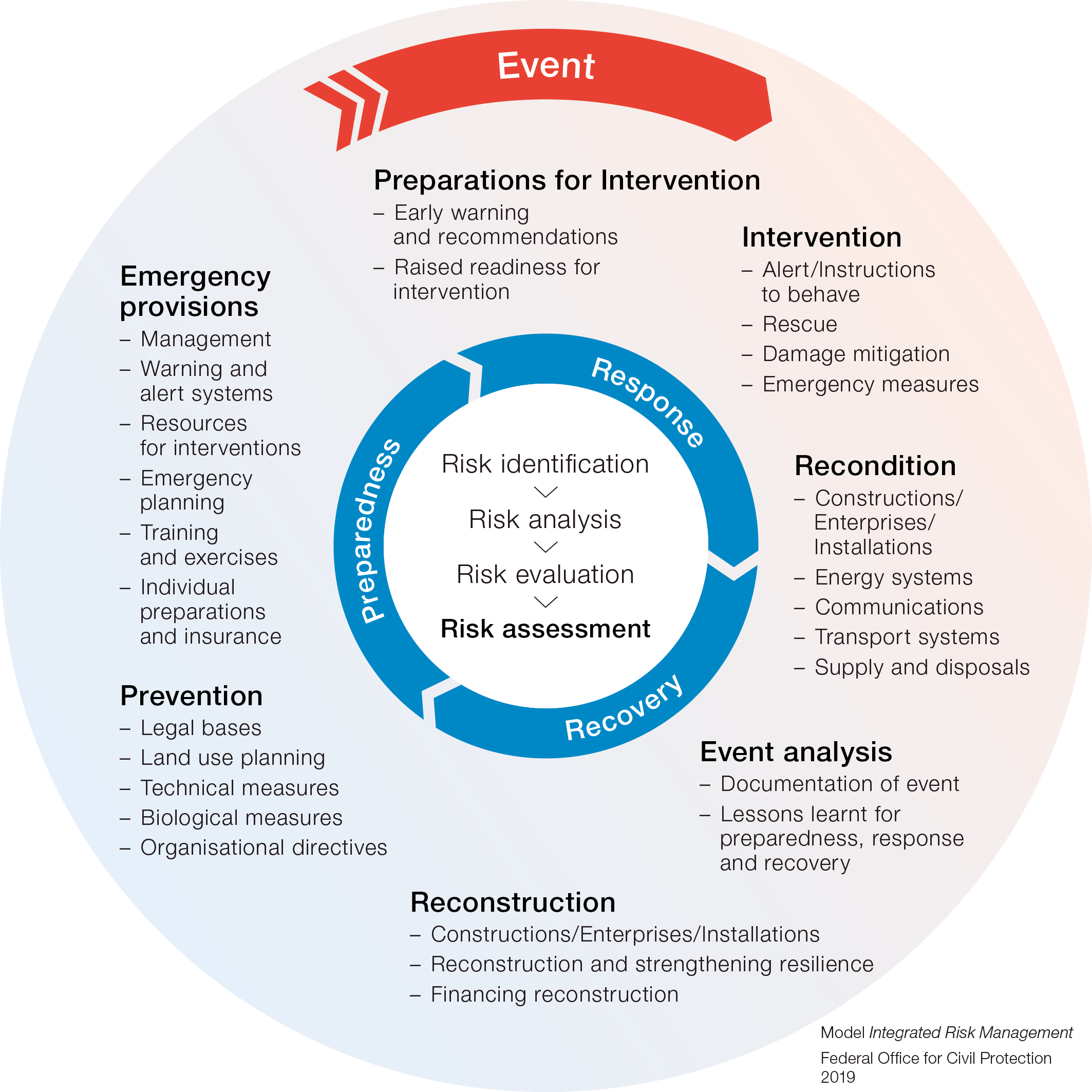Hazards and Risks
Identifying and assessing hazards
Switzerland is periodically affected by events or developments that threaten the general population and its livelihood or at least impose significant constraints on everyday life. Dealing with catastrophes and emergencies is currently the greatest challenge in protecting the general public, in particular because the damage caused by such events is growing incrementally due to the increasingly networked nature of modern societies, the growing vulnerability of infrastructures, and the high value density. In order to be able to counter these hazards in a suitable manner, they and the resulting risks must be known.
Hazard and risk analyses
Hazard and risk analyses provide the basis for action planning in the areas of prevention and emergency provisions for coping with catastrophes and emergencies. Analyses are used to identify relevant hazards and to assess the resulting risks based on probability of occurrence and the extent of damage. The result is a differentiated picture of hazards and their effects, displayed as a risk matrix.
Integrated risk management (Figure)
In civil protection integrated risk management is understood as the systematic approach to cope with hazards and emergencies by using well balanced measures of preparedness, response and recovery.
The concept of integrated risk management encompasses the assessment of hazards and their resulting risks (1). Risks are to be evaluated (2) and corresponding preventive measures (3) and/or emergency provisions (4) are to be planned. If a hazard occurs response measures (5) will manage the incident and the dimension of its damages as quickly as possible. In the following recovery phase (6) reconstruction is carried out in a way to improve resilience, also based on a detailed event analysis.
- A hazard is an event or a development that affect the population or their livelihoods in the case of occurrence.
- Risk is a measure of the magnitude of a hazard and includes the probability of occurrence and the extent of damage. The determination of risk is used to assess the hazards in order to compare them with each other.
The circular diagram illustrates the various elements of integrated risk management and their relationships.

Cantonal hazard analysis
The KATAPLAN Guide is a tool for preparing cantonal hazard analyses and planning preparedness measures.
National Risk Analysis
The Federal Office for Civil Protection (FOCP) is responsible for preparing the National Risk Analysis «Disasters and Emergencies Switzerland» (DES). The National Risk Analysis will periodically be updated.
Documents on hazards and risks
Bei der Bearbeitung von spezifischen sozialwissenschaftlichen, sicherheitspolitischen und risiko-relevanten Fragestellungen arbeitet das BABS eng mit wissenschaftlichen Stellen zusammen, die in den entsprechenden Themenbereichen tätig sind.
Further information
Contact
Continued Development Civil Protection
Guisanplatz 1B
CH - 3003 Bern

